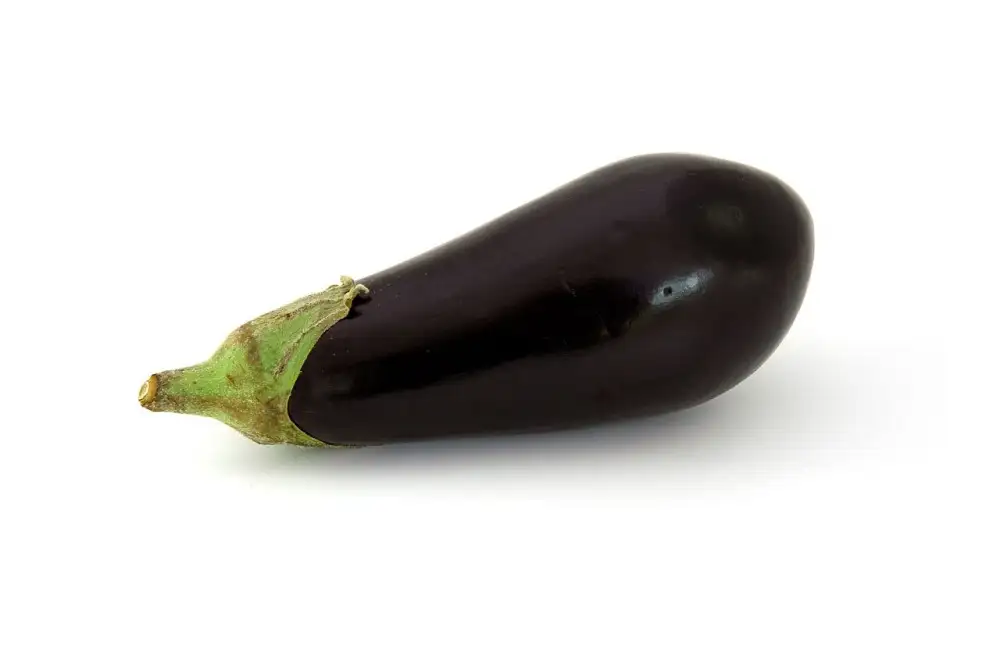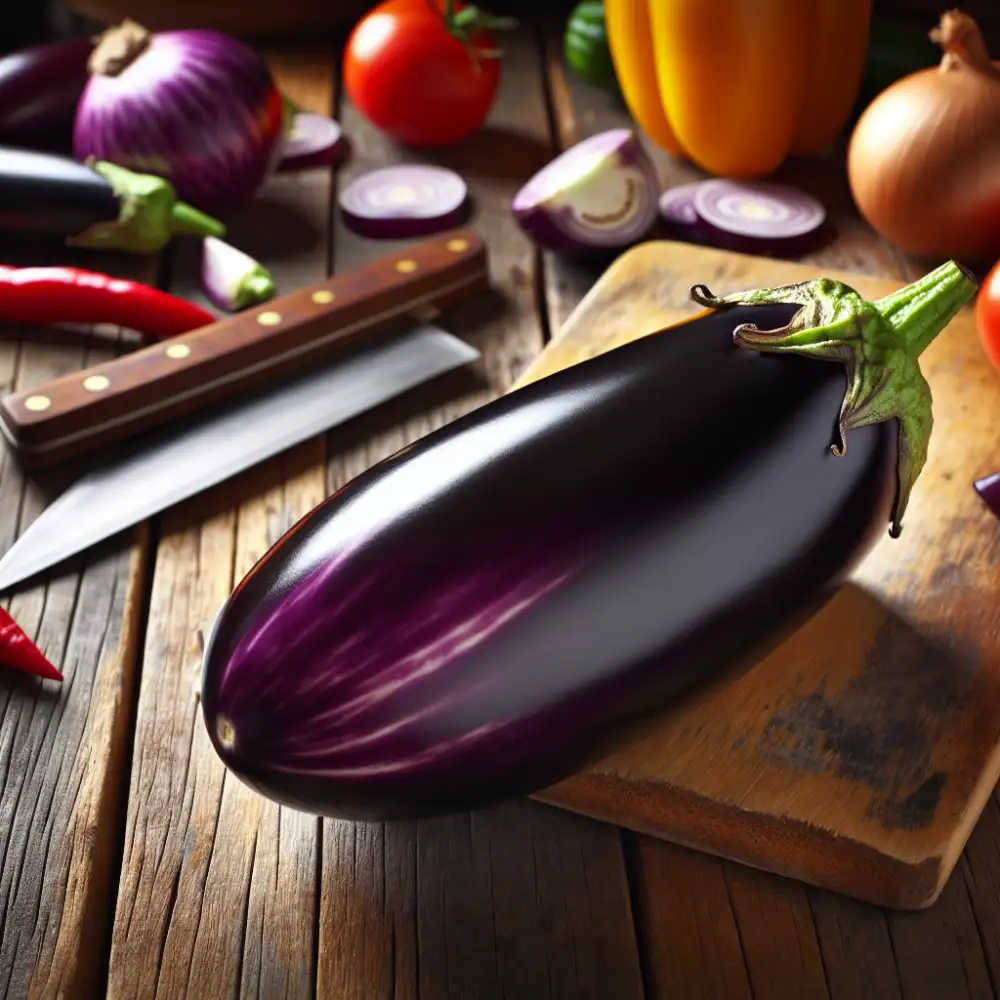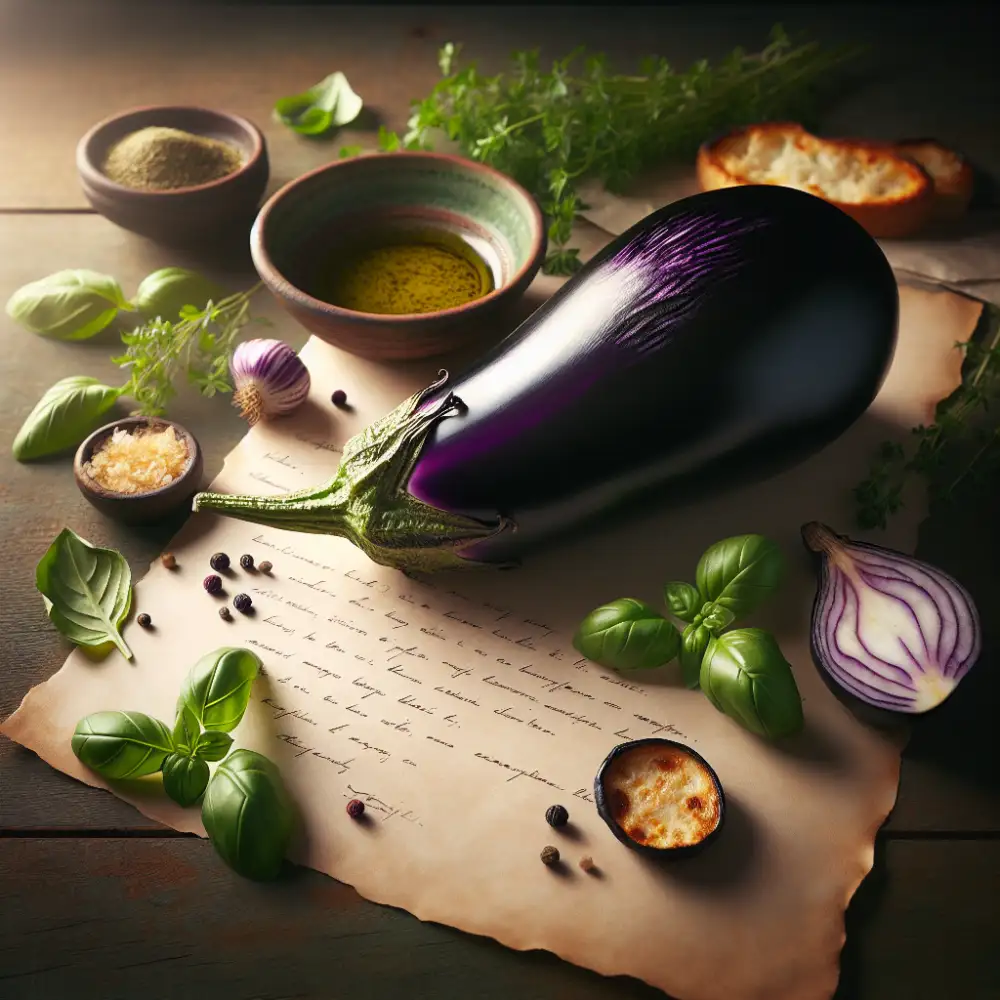Unlocking the Delicious Mystery of Aubergine

Aubergine: What is it?
Aubergine, also known as eggplant, is a versatile and delicious vegetable that belongs to the nightshade family. Despite its name, it is not actually an egg, but rather a fruit that is typically eaten as a vegetable. Aubergines come in a variety of shapes, sizes, and colors, including purple, white, green, and even striped.
Aubergines have a rich, savory flavor that becomes more pronounced when cooked. They have a meaty texture that makes them a popular ingredient in vegetarian and vegan dishes. When cooked, the flesh of an aubergine becomes tender and creamy, making it perfect for absorbing flavors.
One popular way to cook aubergine is to grill or roast it. This method brings out its natural sweetness and gives it a smoky flavor. Simply slice the aubergine, brush it with olive oil, and cook it over medium heat until it is tender and slightly charred.
Another delicious way to enjoy aubergine is to make baba ghanoush, a Middle Eastern dip made with roasted aubergine, tahini, lemon juice, and garlic. The aubergine is roasted until it is soft and smoky, then mashed and blended with the other ingredients to create a creamy and flavorful dip.
Choosing the best aubergines
When shopping for aubergines, also known as eggplant, there are a few things to keep in mind to ensure you select the best ones for your recipe. Look for aubergines that have smooth, taut skin that is free of wrinkles or blemishes. The color should be vibrant and glossy, whether it's the classic deep purple, a pale green variety, or even a striped variety.
Next, assess the size and weight of the aubergine. Choose one that feels heavy for its size, as this indicates it is full of moisture and will be less likely to be bitter. A ripe aubergine should spring back slightly when you gently press your finger against the skin. Avoid aubergines that feel soft, spongy, or have any give when pressed, as this is a sign of overripeness.
The size of the aubergine can also be a factor depending on your recipe. Smaller aubergines tend to be sweeter and have fewer seeds, making them ideal for grilling or roasting whole. Larger aubergines are better suited for dishes where they will be diced or sliced, such as in stews, curries, or baba ghanoush. Remember to store your aubergines in a cool, dry place, but not in the refrigerator, as this can damage their texture and flavor.
Storing your aubergines
Aubergines are best stored at room temperature and are sensitive to both heat and cold. Avoid refrigerating them, as temperatures below 50°F (10°C) can damage their delicate flesh and lead to chilling injury. Instead, keep them in a cool, well-ventilated spot, away from direct sunlight. A perforated plastic bag can help maintain humidity but avoid sealing them in plastic wrap, which can trap moisture and promote spoilage. Ideally, use your aubergines within a week of purchasing for the best flavor and texture.

However, if you need to store them longer, consider grilling, roasting, or sautéing them first. Cooked aubergine can be stored in an airtight container in the refrigerator for up to 3 days or frozen for several months. This allows you to enjoy their unique flavor and versatility even when they are not in peak season.
Preparing your aubergine
Aubergines, also known as eggplants, are a versatile fruit often used in savory dishes. Before cooking, they need a little preparation. Start by washing the aubergine under cool running water and pat it dry. There’s no need to peel the skin, although you can if you prefer. The skin is edible and contains nutrients. Next, decide on your cut. For grilling or frying, slice it into rounds about 1 cm thick. For roasting or stewing, dice it into larger chunks. If your recipe calls for it, salt the aubergine to draw out excess moisture. This step helps prevent the aubergine from soaking up too much oil during cooking and can improve its texture. Place the sliced or diced aubergine in a colander and sprinkle generously with salt. Let it sit for about 30 minutes, then rinse thoroughly under cold water and pat dry with paper towels. Your aubergine is now ready for your favorite recipe.
Delicious aubergine recipes
Aubergine, also known as eggplant, is a versatile ingredient that can be enjoyed in countless ways. Its mild flavor and meaty texture make it an excellent addition to stews, curries, and stir-fries. One popular recipe is Baba Ghanoush, a smoky dip made with roasted aubergine, tahini, garlic, and lemon juice. To prepare it, simply roast a whole aubergine until tender, scoop out the flesh, and blend it with the remaining ingredients until smooth and creamy. Another delicious option is Moussaka, a Greek casserole featuring layers of fried aubergine, spiced meat sauce, and creamy béchamel topping. The aubergine is sliced, salted, and pan-fried until golden brown before being layered in a baking dish with the other components. For a lighter dish, try grilling or pan-frying aubergine slices and serving them as a side dish or using them as a base for vegetarian burgers or sandwiches. Aubergine can also be stuffed with various fillings, such as rice, quinoa, or vegetables, and baked to perfection. With its versatility and delicious flavor, aubergine is a true culinary gem that deserves a place on your plate.
Grilled aubergine with garlic
Aubergine, also known as eggplant, is a versatile vegetable with a rich, smoky flavor that intensifies when grilled. Grilling aubergine brings out its natural sweetness and creates a tender, creamy texture.

| Feature | Aubergine | Zucchini | Portobello Mushroom |
|---|---|---|---|
| Texture (when cooked) | Soft, creamy | Tender, slightly firm | Meat, chewy |
| Flavor | Mild, slightly bitter | Neutral, slightly sweet | Earthy, savory |
| Cooking Methods | Grilling, roasting, frying, stewing | Grilling, roasting, frying, sautéing | Grilling, roasting, sautéing |
| Typical Use | Mediterranean, Middle Eastern cuisine | Mediterranean, Italian cuisine | Vegetarian dishes, as a meat substitute |
To grill aubergine, start by choosing firm, smooth-skinned aubergines. Slice them lengthwise or into rounds, about half an inch thick. Brush the slices with olive oil and season them with salt, pepper, and any other desired herbs or spices. Preheat your grill to medium heat. Grill the aubergine slices for about 5-7 minutes per side, or until they are tender and slightly charred.
Once grilled, the aubergine can be enjoyed in countless ways. It can be served as a simple side dish with a drizzle of olive oil and a sprinkle of fresh herbs. Grilled aubergine is also delicious in sandwiches, salads, dips, and stews. Its smoky flavor pairs well with ingredients like tomatoes, garlic, feta cheese, and tahini.
When buying aubergines, look for ones that are firm and heavy for their size. Avoid aubergines that have wrinkled skin or soft spots. Store aubergines in the refrigerator for up to 5 days.
Baba ghanoush recipe
Baba ghanoush is a Levantine dish of mashed cooked eggplant blended with tahini, lemon juice, and various seasonings. It is popular in the Levant and Eastern Mediterranean, as well as in the Caucasus. The eggplant is typically roasted or broiled over an open flame before being mashed, so that the pulp is soft and smoky. Baba ghanoush is often eaten as a dip with pita bread, and it can also be used as a side dish or as a filling for sandwiches and wraps.
The eggplant, or aubergine, is a species of nightshade grown for its edible fruit. "Eggplant" is the common name in North America and Australia, but "aubergine" is used in British English and in South Asia, Southeast Asia, and South Africa. The fruit is widely used in cooking. As a member of the genus Solanum, it is related to both the tomato and the potato. Like the tomato, its skin and seeds can be eaten, but, like the potato, it is usually eaten as a cooked vegetable.
Here is a simple recipe for baba ghanoush:
Ingredients:


1 large eggplant
1/4 cup tahini
1/4 cup lemon juice
1/4 cup chopped fresh parsley
2 cloves garlic, minced
Salt and pepper to taste
Instructions:
1. Preheat oven to 400 degrees F (200 degrees C).
2. Prick the eggplant all over with a fork.
3. Roast eggplant in preheated oven for 45-60 minutes, or until soft.
4. Let eggplant cool slightly, then scoop out the flesh and discard the skin.
5. In a food processor, combine eggplant flesh, tahini, lemon juice, parsley, and garlic.
6. Process until smooth.
7. Season with salt and pepper to taste.
8. Serve immediately or chill for later.
Aubergine parmigiana
Aubergine, also known as eggplant, is a versatile ingredient that forms the heart of many delicious dishes, with aubergine parmigiana being a classic example. This Italian masterpiece is a celebration of simple ingredients, transformed into a symphony of flavors and textures.
The star of the show is, of course, the aubergine. Choose large, firm aubergines with smooth, glossy skin. The preparation is key: slicing the aubergine thinly, salting it, and allowing it to rest helps to draw out excess moisture, resulting in a less bitter and more flavorful final dish.
Once the aubergine is prepped, it's time to build the layers of flavor. The traditional recipe calls for thin slices of fried aubergine layered with rich tomato sauce, mozzarella cheese, and fresh basil. Each element plays a crucial role: the slight bitterness of the aubergine is balanced by the sweetness of the tomato sauce, the saltiness of the cheese, and the freshness of the basil.
The dish is then baked to perfection, allowing the flavors to meld and the cheese to turn golden and bubbly. The result is a dish that is both comforting and elegant, perfect for a family meal or a special occasion.
Frequently asked questions
What is the best way to cook aubergine?
Aubergine is a very versatile vegetable that can be cooked in many different ways. It can be grilled, fried, roasted, or even stewed.
How do I know when an aubergine has gone bad?
A bad aubergine will have soft, mushy flesh and may have dark spots. The skin may also be wrinkled or shriveled. If you see any mold on the aubergine, it should be discarded.
Do I need to salt and drain aubergine before cooking?
Salting and draining aubergine is a matter of personal preference. Some people believe that it helps to remove any bitterness, while others find that it makes the aubergine too salty. If you do choose to salt your aubergine, be sure to rinse it well before cooking.

Can you eat the skin of an aubergine?
Yes, you can eat the skin of an aubergine. It is perfectly edible and contains a good amount of fiber. However, some people find the skin to be bitter, so you may want to peel it if you are sensitive to bitter flavors.
Is aubergine good for you?
Aubergine is a low-calorie food that is a good source of fiber, potassium, and vitamins C and K. It also contains antioxidants, which may help to protect your cells from damage.
More delicious vegetable recipes
Aubergine, also known as eggplant, is a versatile vegetable that can be enjoyed in countless ways. Its mild flavor and meaty texture make it an excellent addition to stews, curries, and stir-fries. One popular preparation method is roasting. To roast an aubergine, preheat your oven to 400 degrees Fahrenheit (200 degrees Celsius). Wash and dry the aubergine, then slice it in half lengthwise or into rounds. Drizzle the cut sides with olive oil, salt, and pepper. Place the aubergine on a baking sheet and roast for 20-25 minutes, or until tender and slightly browned. Roasted aubergine can be enjoyed as a side dish, added to salads, or used as a topping for pizzas and sandwiches. Another delicious way to prepare aubergine is to grill it. Preheat your grill to medium heat. Slice the aubergine into rounds or lengthwise strips, then brush both sides with olive oil and season with salt, pepper, and your favorite herbs and spices. Grill the aubergine for 3-5 minutes per side, or until tender and slightly charred. Grilled aubergine can be served as a side dish, added to sandwiches and wraps, or used as a base for dips and spreads.
Published: 08. 07. 2024
Category: Food



